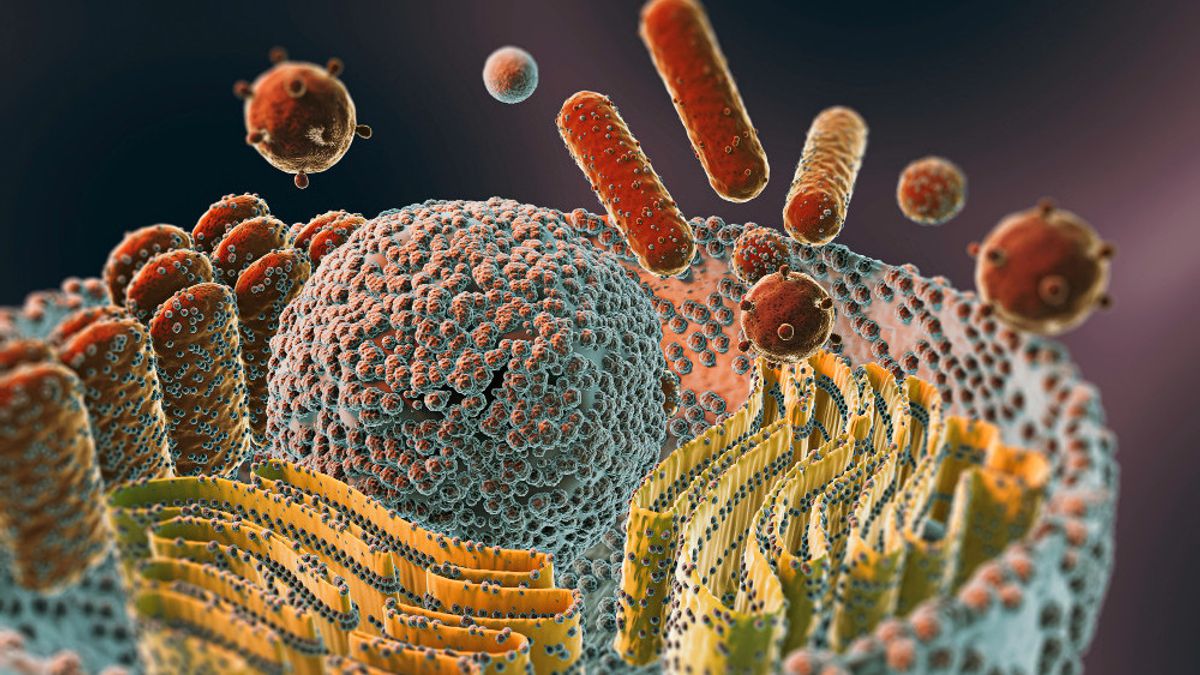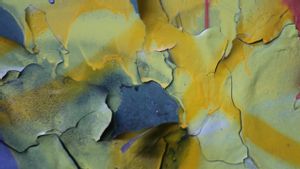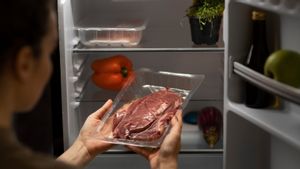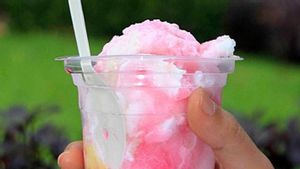YOGYAKARTA - Cells are arranged in the body of every living thing, be it humans, animals, and plants. Differences in animal and plant cells are interesting to understand as knowledge. Plant and animal cells have a number of similarities and differences.
Animal and plant cells have similarities in the form of eukaryotic cells. The characteristics of both cells are the same, such as the presence of cell membranes and cell organs, such as nuclus, endoplasma reticulum, and mitochondria.
But in addition, there are examples of animal and plant cells in terms of shape, arrangement, and location. But before you listen closely to the difference between the cells of these two living organisms, you should first understand what are cells and their functions.
Cells are the smallest parts of living things that show the characteristics of life, citing the SMK Health Biology Module book: Animal Cells and Plants (2016) published by the Ministry of Education and Culture written by Nurhayati. Each cell contains a structure called the organile and each organile has a certain function.
There are living things that consist of only one cell arrangement. This organization is referred to as unicellular, such as blue-green bacteria and potatoes. While humans, plants, and animals are multicellelueler ogranism consisting of many cell constituents of their bodies. Even humans themselves can have 100 trillion cells in the body.
There are differences in plant and animal cells because these two organisms have different needs. In terms of basic structure, animal cells and plant cells are actually the same. Differences arise because each of them experiences different stimuli from their environment.
Here are some differences in animal and plant cells along with their functions:
Whether or not cell is predicted to be one of the differences between animal and plant cells. In animal cells, there is no cell wall. So animal cells are more flexible in terms of the shape and size of the cells. While plant cells have cell walls. The walls of these cells consist of strong cellulose fibers, thus supporting structural and protecting cells from osmotive pressure.
Iol centriol or centrosom is an organ that is only found in animal cells. This part of the cell functions in cell division. While plant cells do not have a centriol structure. The centrosom plays a role in the formation of the divisions that are needed to destroy chromosomes during animal cells do division.
Animal and plant cells have striking differences in terms of vacuola. Vakuola in plant cells is larger and permanent in nature. This vacula functions in storing water, nutrients, and supporting structural plants. While the vacuola of animal cells has a small size that plays a role in the storage and transportation of certain substances.
The shape of an animal's cell can change because it does not have a rigid cell wall. The condition of this cell shape is influenced by cytoskeletons or protein networks that provide support and flexibility. Meanwhile, plant sem tends to have a cell shape that rarely changes due to the presence of a strong cell wall.
SEE ALSO:
Plants use cell organs called chloroplas to produce energy from sunlight through photosynthesis processes. While in animal cells there is no chloroplas. In animal cells, energy income comes from food (glucose) through the process of respiration of cells. Plants also contain mitochondria as a place for cellular respiration processes.
In plant cells and bacteria, the walls of cells stick to the plasma membrane on their outer surface. This plasma membrane or cell membrane consists of a semipermeabelian lipid double layer. This plasma membrane plays a role in regulating the transport of materials that come out and enter cells.
Plastida cells are only found in plants and several types of parasites. This plastida plays a role in providing essential metabolism for plants in the process of photosynthesis in chloroplas.
Animal cells have a clear lysosom. Lisosoms are spherical vesiculas bound by membranes that contain hydrolithic enzymes that can break up a variety of biomolecules. While the lysosoms in plants are still differentiations because they are not clearly visible.
The silia in multicellular organisms functions in moving cells or a group of cells. Silia helps transport fluids through these cells. Silia is a mobile motile complement found in most microorganisms and animals, but is not present in high-level plants.
That's a review of the differences in animal and plant cells that you need to know to increase scientific insight. Although it has the same cell characteristics, animal and plant cells have a number of differences as mentioned above. Also read the importance of bacteria for the health of the body.
Stay up to date with the latest domestic and other overseas news on VOI. We present the latest and updated information nationally and internationally.
The English, Chinese, Japanese, Arabic, and French versions are automatically generated by the AI. So there may still be inaccuracies in translating, please always see Indonesian as our main language. (system supported by DigitalSiber.id)


















